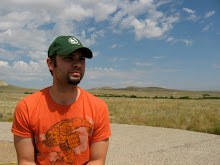 would be interesting to pick up the most recent issue of Wonder Woman to see how it reflects her thinking on the issue ten years later (Really? Ten years?).
would be interesting to pick up the most recent issue of Wonder Woman to see how it reflects her thinking on the issue ten years later (Really? Ten years?). The issues raised by WiR weren't so much about violence generally, or even violence directed at women, but about the gendered nature of the violence heaped upon female characters. The sexualized violence, the disempowerment. In responding to Simone's list, Ron Marz, who wrote the issue of Green Lantern featuring the Woman in Refrigerator scene (new Green Lantern Kyle Rayner comes home to find his girlfriend Alex DeWitt killed and stuffed into their fridge), responds that the causes of this problem are multiple. First, it's as much a supporting character issue as it is a gender issue (i.e. supporting characters suffer more because of the limited changes writers are allowed to make to leading characters), and a business issue (super hero comics are mainly purchased by males who have not, historically, been open to buying comics with female lead characters).
Wonder Woman #30 has plenty of violence. It also features a female supporting character who is possibly killed after being tortured on-panel. Pinned to her body is a note: "She screamed a lot! She was fun!" On the surface, it seems as if Simone has made the same compromises that Marz contends shape the gendered violence of comics.
I don't read Wonder Woman regularly, and I haven't read anything Simone has written since Deadpool. But I think that this latest issue shows her engagement with issues of gendered victimization in interesting ways. Though I can't say that this is part of a project of hers, or the development of an ongoing theme in Wonder Woman, Simone seems to be trying to explore the same issues she raised as a fan with her WiR list.
Wonder Woman's friend Etta Candy is tortured, by a Frakenstein's Monster of some kind called Genocide. Genocide is a weapon created by, among others, Wonder Woman's long-time nemesis Cheetah. Cheetah is of the opinion that acts of monstrous violence are "humanity's only real legacy" and she supervises the building of a creature made up of, in part, the "dirt where dictators had killed millions, all over the world." Violence is, clearly, one of the central preoccupations with this story. Oh yeah, and Genocide is a girl.
Wonder Woman, herself, tortures Cheetah to get information on Candy's whereabouts. She even threatens to kill Cheetah, before cutting her face and preparing to cut off her tail. Cheetah's confidence is broken by the cut to her face, implying a degree of vanity that Wonder Woman is able to manipulate for information. This is Wonder Woman in full-on Kingdom Come mode, a warrior for whom violence has become the only option. She tells Cheetah that she is willing to torture her because she stands for the "preservation of innocent life. All other priorities are secondary."
It's hard not to read the two tortures scenes as parallel. Wonder Woman has adopted the ticking-clock justification for torture (most recently seen on 24 and those memos President Obama just released). Wonder Woman's actions, placed beside Genocide's, hardly paint the hero in a positive light. Both scenes are cases of women torturing women. Genocide's violence doesn't seem gendered: she would torture anyone for pleasure, and doesn't sexualize Candy in any way (she tries to inflict psychological damage with the information that Candy's husband, Steven Trevor, loved Wonder Woman first, but Candy doesn't bite). Wonder Woman's torture of Cheetah is a bit less straightforward. Cheetah does not believe that Wonder Woman will kill her, but, unlike Candy, she breaks under threats to her physical appearance.

Given Cheetah's claim that violence is humanity's legacy, it's interesting how Genocide isportrayed as a woman. Violence isn't gendered so much as it is embodied - it is an idea looking for a vessel. That this vessel, Genocide, is a woman isn't coincidental. Wonder Woman becomes increasingly violent throughout the issue. She has reduced her principles to the "preservation of innocent life" and nothing else. Simone isn't taking up the institutional and societal forces that shape gendered violence, but she is addressing the ways in which it affects women - those who suffer violence as well as those who commit it. Violence is an inheritance, it is passed on (the mother/daughter imagery with Cheetah and Genocide does not evoke Frankenstein and his monster accidentally). Quite an interesting approach, actually, and I'll be reading the rest of this story to see where Simone goes with it.
Without having read the whole "Rise of the Olympian" story-line, I don't want to make any sweeping claims about Simone's position on gendered violence in super-hero comics, though she seems engaged with the topic. I'm tempted to read this issue as condemning Wonder Woman's use of violence as a means to an end, but I'm not sure that I feel safe in that position. Clearly, super-hero comics are built on retributive violence and Wonder Woman isn't going to suddenly become a pacifist at the end of this story-line. If she does, it won't stick. But as long as more is asked of her than to get pregnant with Superman's baby (cough*KingdomCome*cough), I'll be interested.


No comments:
Post a Comment